Article Written about 2016
- More Thoughts on The Troon Clubs
This is a photo took in 1996.
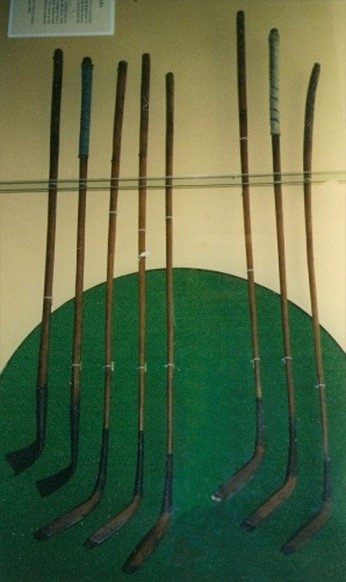
In June 2010 I read with great interest Ian Crowe's theory regarding their origin. This link provides details.http://www.oldestgolfclubs.com/page15.html
Ian's theory prompted me to write my own article suggesting that that the clubs may have connections to the Jacobite cause.
My article of the origin of the Troon Golf Clubs - Oldest Known Clubs
Over the past few years I have periodically dipped in-and-out of researching more about the symbols that are stamped on the clubs.
I'm convinced that the symbols on the clubs do not signify royal ownership, and particularly that of a third royal son as postulated by Ian, although credit to Ian for coming up with an original theory. The following explains why.
I've been researching many different types of Scottish artefacts dating from the 17th and 18th centuries to try and discover clues as to the origin of the Troon clubs. Recently I discovered an academic paper written by Robin Rodger about an obscure Scottish sporting trophy called The Silver Ball of Rattray. If you google "Silver Ball of Rattray" I'm sure you'll quickly find the original paper if you wish to read it for yourself.
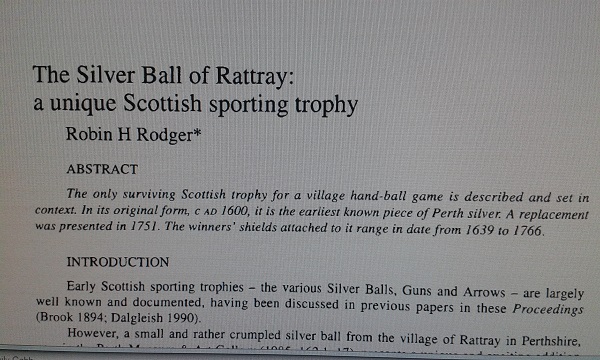
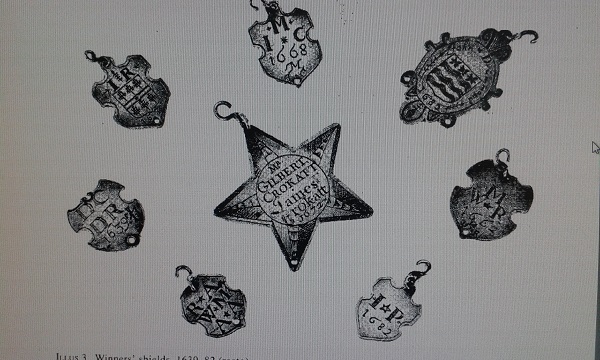
The style of the initials on the medals attached to the Rattray Silver Ball look familiar don't they?
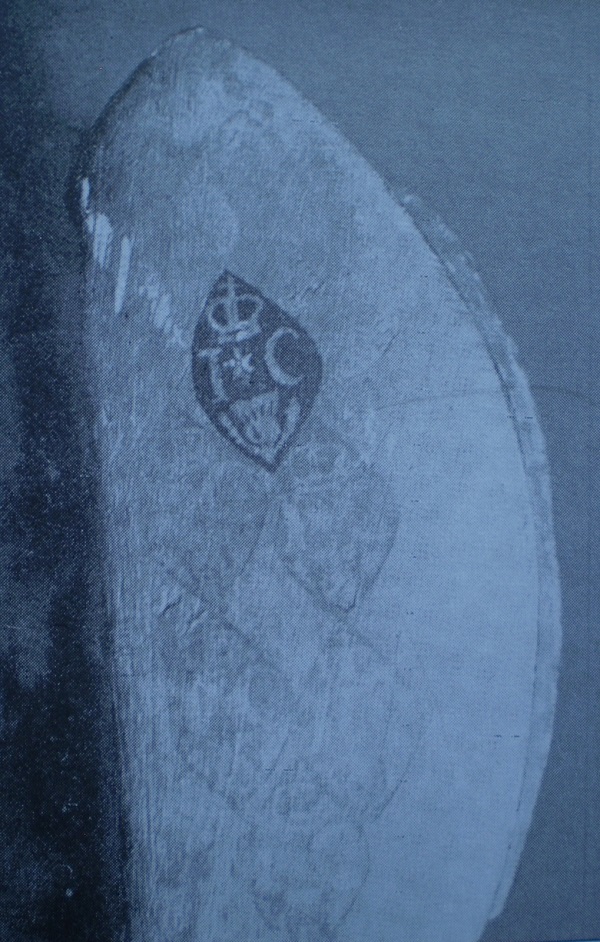
There's a lot of stars, or mullets if you prefer that heraldic term, on the Rattray Ball medals. The medals date from 1639 to 1766. Unfortunately, only a few medals are illustrated within the paper, but I think it's clear that any stars, between or around the winners initials, are being used aesthetically rather than as heraldic indicators. Either that or there's an unusually high number of third sons who were successful at this obscure game played in Perth. And therein, I believe, also lies another clue to the significance of the stamp on the Troon Golf clubs. Could it be that the Troon clubs were actually a sporting prize? The academic paper written about the Silver Ball of Rattray confirms that all these initials were those of the winners...not the maker of the medals. Other academic papers have been written in the past about the silver trophy arrows that were shot for by numerous archery societies across Scotland. Many of these arrows have medals attached to them, and many of them carry initials and stars. I think nineteen silver trophy arrows still exist so that would provide a fertile researching area for somebody with the time and inclination to investigate further. But a definite pattern is clear; any initials present are those of the the winners of the competitions,.and it was usually the responsibility of the winner to commission the medal to be made and his choice as to how his initials or armorial crest should be displayed.
So I think that the Troon Clubs could be a sporting trophy in themselves. Maybe the winner of a significant golfing match had them made to commemorate his victory. Perhaps if a record could be found of a usable piece of sporting equipment (say an archery bow) being made and stamped with the winners initials, or armorial bearings, this would lend credence to this idea. If you know of any such item I'd be delighted to hear from you.
Interestingly the Rattray Ball medals carry almost identical "J" and "C" initials as those seen on the Troon Clubs (it is clear that what once was thought to be a letter I is actually a J). Maybe research will reveal that James Crockett was also a talented golfer! His ball is stamped M for Minister, and then with a J and a C. It's not that improbable that James Crockett was a golfer given that he was a middle class person living in the Perth area.
I also note that one James Carmichael was also one of the competitors for the first Silver Club competed for by The Honourable Company in 1744. Maybe before the Silver Club trophies came into being the winners of certain matches were in the habit of commissioning wooden trophy clubs.
But what about the "Stuart Thistle" mark on the Troon clubs you might ask. Doesn't this signify a clear royal connection or royal ownership? I my opinion "no". A quick surf around the internet reveals that the crowned thistle mark (also referred to as "The Badge of Scotland") was used on a variety of objects during the 17th and 18th centuries including wine glasses, clay pipes, spoons, wooden blanket chests, cloth seals, military badges and metal tokens (many thought to be connected with the Church).
Crown and Thistle markings on a lead cloth seal , dated with initials of merchant
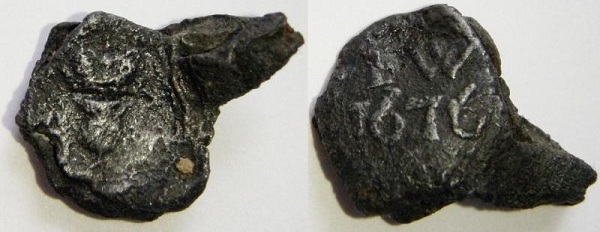
Crown and thistle markings on the bowl of a clay pipe dating around 1750
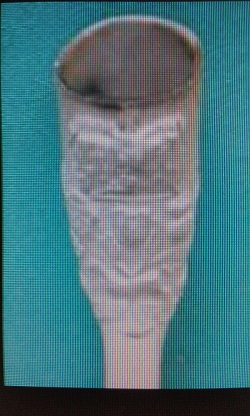
As previously pointed out it has featured on many coins dating from the 1500's right up to present day. So to say that the Troon Clubs must have been made for either the King, or somebody personally connected to him, is connecting two many dots together. I think it is much more probable that the crowned thistle mark is indicating an allegiance to the royal house of Stuart.